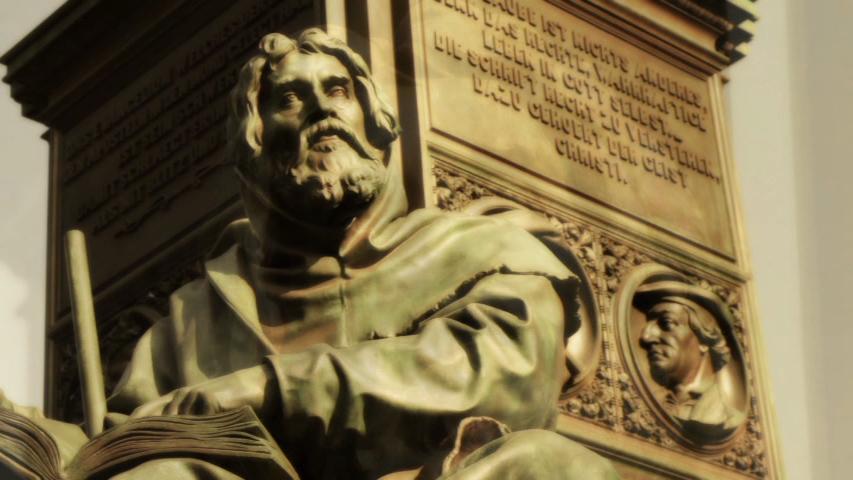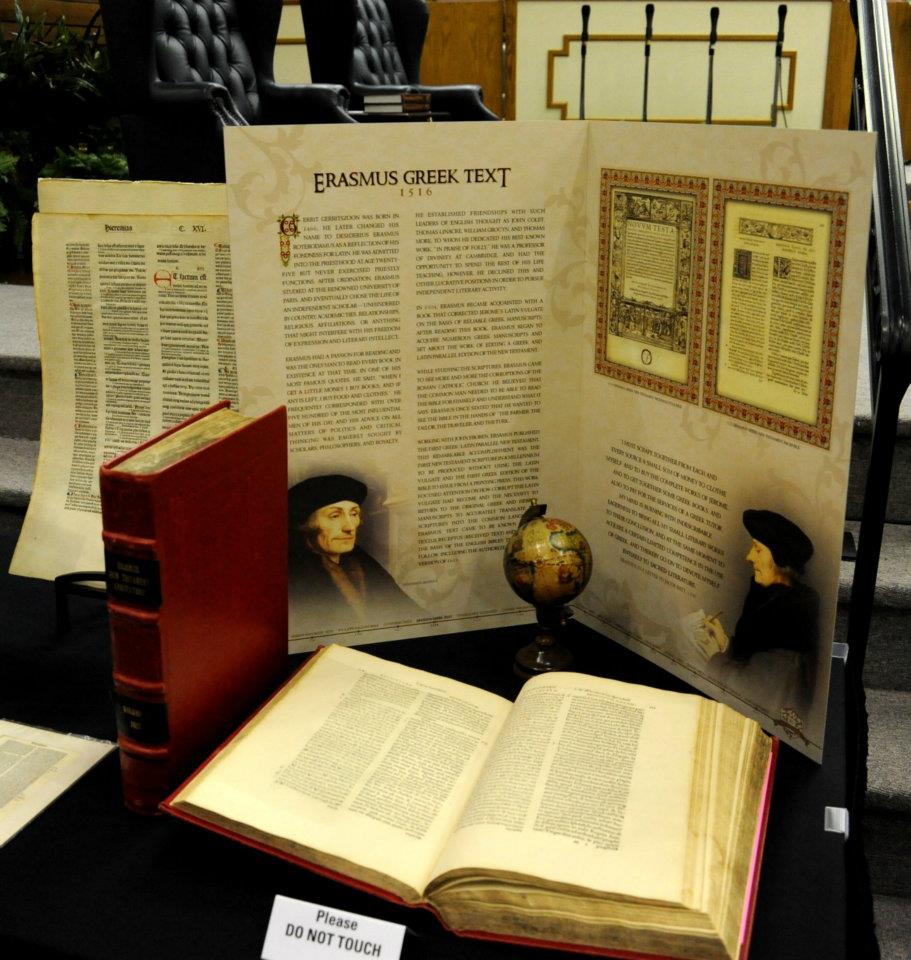 |
|

|
|
**List: French Ministry the Holy Bible ( la Sainte Bible )
|

Français / French Bible History (2) 
**List: French Ministry
the Holy Bible ( la Sainte Bible )
French...
"The close relation in which for centuries the court, nobility and
clergy of England stood to the corresponding bodies in Northern
France lends a special interest for English readers to the Bible
versions in French and Norman French which circulated in
manuscript form among the literate of both countries prior to
the invention of printing. In fact, it may be said to have lastedeven into the sixteenth century. For the British Museum has a
copy of the Le Fèvre French Bible of 1534, bound in England
and bearing the initials of Henry VIII and Anne Boleyn. This
is the very Bible which has been shown to have contributed
much matter, in the shape of woodcuts, chapter-headings, mar-
ginal notes, and the like, to the so-called "Matthew’s Bible" of
1537, the second English printed Bible.
Le Fèvre, a distinguished humanist of Paris at the dawn of
the Reformation, produced the last of quite a series of printed
Scriptures made chiefly by revision of earlier French manuscript
texts. These were often little more than paraphrases of the Latin
originals. The first genuine product of the French Reformation
was the Bible of Olivetan, a modest but very competent scholar,
kinsman to John Calvin. Calvin himself wrote for it the Latin
preface and an introduction to the New Testament, and he took
a large part in later revisions of this original Neuchatel Bible of
1535. An interesting feature is the acrostic verse printed on itslast page, which when interpreted spells out the information
that the people of the Swiss Canon of Vaud had contributed the
funds for its publication because of their love for the Gospel.
Thenceforth the Bible-reading world of all the Protestants
who speak French--in Belgium and Switzerland as well as
France--was supplied by successive editions of Olivetan’s Bible,
revised by Calvin and others. But Roman Catholic readers pre-
ferred a revision of LeFèvre’s text, made by professors of Lou-
vain University in 1550, because it was derived from the Latin
Vulgate and therefore more pleasing to them than the Neuchâtel
text translated directly from the Hebrew and Greek. One of the
revisions of Olivetan’s version, brought out by Robert Stephanus
(Estienne) at Geneva in 1553, is said to be the earliest entire
Bible, in any language, to contain Stephanus’ division of the
text into the chapters and verses familiar to us. The Ostervald
Bible, so popular for two centuries among French-speakingProtestants, is a revision of Olivetan’s version, made first at
--1000 Tongues, 1939 [Info only]
Amsterdam in 1724, and often revised later both privately and
by ecclesiastical authority.
Parallel with it runs the history of the De Sacy version, pro-
duced by the Port Royal group of Roman Catholics, who are
perhaps best known through the defence of them by Pascal in his
"Provincial Letters." At first issued without the notes which are
an essential part of every approved Roman Catholic version, it
was re-issued with copious notes and obtained ecclesiastical
approval. It has continued to be published, both with and with-
out notes, till recently, and in the latter form has ever been
circulated by the Bible Societies. The French Bibles now issued
and widely circulated by these Societies are chiefly the nineteenth
century version of Louis Segond, a Geneva professor, and the
twentieth century "Synodal Version," a revision of Ostervald,
prepared at the instance of the Synod of the Reformed Churches.""The ABS and the BFBS have both published
Scriptures in the following versions: Martin, Ostervald, Segond and
Synodal, and the BFBS also in the De Sacy version. CP: ABS,
BFBS."--1000 Tongues, 1939 [Info only]
[Cristian Helps Ministry (USA)] [Christian Home Bible Course]